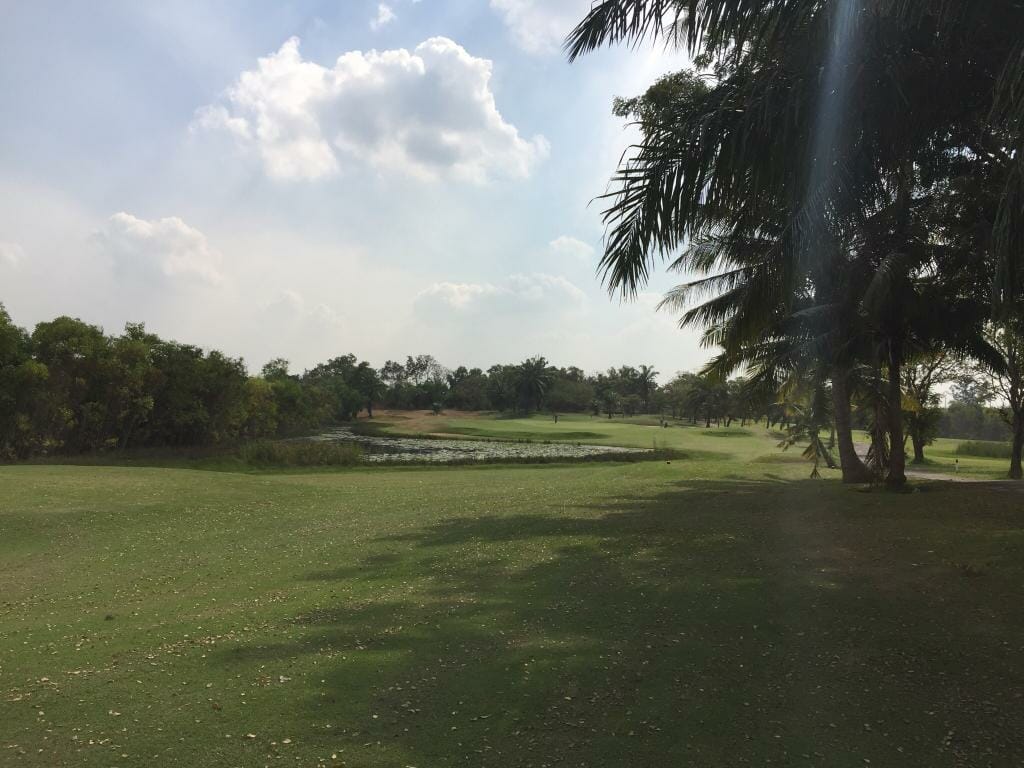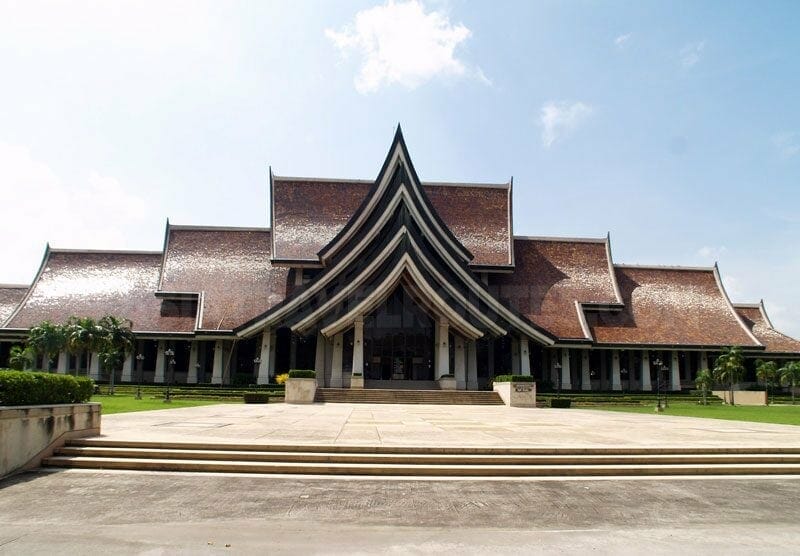Wat Chaiwatthanaram Located on the bank of the Maenam Chao Phraya, to the west of the city island is Wat Chaiwatthanaram. Built in 1630 by King Prasat Thong to honor his mother, Wat Chai Wattanaram was conceived as a replica of the Angkor temple. A Royal monastery, the temples unique feature is a huge prang which is surrounded by smaller prangs. This symbolizes Mount Meru, the abode of the heavenly gods. Now restored, the temple is also accessible by a long-tailed boat trip from Chankasem Palace Pier. This 1-hour trip to the temple costs approximately 300-400 bahts (round-trip).
Wat Kasattrathirat Worawihan
This structure is situated outside the city island, opposite Chedi Phra Si Suriyothai, on the bank of the Chao Phraya River and considered another interesting temple worth visiting. Formerly known as Kasattra or Kasattraram, the ancient temple is of the Ayutthaya period with a main Prang (stupa) at its centre.
Wat Kudidao
Located to the east in front of the railway station, this old monastery was beautifully constructed with better craftsmanship than many other temples as can be seen from the remaining ruins which have been left deteriorate.
Wat Lokkayasutha
This monastery is over a kilometer behind Wat Suanluangsopsawan adjacent to Wat Worachettharam. Accessible by the road inside the compound of the Distillery Plant, or through the road behind the Phlapphla Trimuk (three-gabled roof pavilion), the monastery is in the area of the Ancient Palace. Proceed past Wat Woraphot and Wat Worachettharam until reaching the open-air site of the large reclining Buddha, which is made of brick and covered with plaster, is approximately 29 meters long. The ruins of large hexagonal pillars near the image are believed to be the ruins of the Ubosot.
Wat Na Phra Men
Formerly known as Wat Phra Merurachikaram, the temple is located across the river north of the palace. Although the date of construction is unknown, the temple has been restored a number of times but still has a finely proportioned ubosot and viharn. The latter contains a large Dvaravati stone Buddha seated in European style, his hands on his knees, which some scholars think originated in Nakhon Pathom. The Ubosot design is very old in the typical Thai style. The most interesting object is the principal Buddha image, which is fully decorated in regal attire. The most interesting fact attributed to the image is that it escaped destruction when the Burmese were burning everything down. It was from the grounds of this temple that the Burmese King Chao Along Phaya decided to fire a cannon at the Grand Palace.
Wat Phanan Choeng
Overlooking the river on the opposite bank from the main city, Wat Phanan Choeng was founded shortly before the establishment of Ayutthaya as the Kingdoms capital. Its main building enshrines a huge, seated Buddha image, that is 57 feet tall an object of particular devotion to Thais of Chinese origin. This principal image called Phrachao Phananchoeng was built of stucco in the attitude of subduing evil in 1325. The temple is a popular stopover for riverboat cruises along the Maenam Chao Phraya. This temple can be reached by boat from the fortress ruins.
Wat Phra Mahathat and Wat Ratburana
Wat Mahathat is located in front of the Grand Palace to the east, next to Pa Than Bridge. The temple is believed to be one of Ayutthaya’s oldest temples, possibly built by King Boromaraja I (1370-88). Its central prang, of which only the base remains, once rose to a height of 165 feet. Traces of the original stucco decorations can still be seen on some of the surrounding chedis.
Wat Ratburana
King Borom Rachathirat II (Chao Sam Phraya) built a temple on the site where his two elder brothers were cremated. His two brothers died in a power struggle to succeed their father, King Nakhon In who died in 1424. A series of bell-shaped chedis surround the main prang and a large oblong-shaped viharn is situated at the front. The architectural style evolved from the Khmer prasat, but has been adapted by the addition of a higher multi-layered base and an extended upper section. More corners were added to the main body and the tower section was extended to become corn-shaped. The antefixes, on the other hand, were attached to the body of the tower instead of leaving a decent gap between them which was common in Khmer prasats. These two temples are separated by Naresuan Road.
Wat Phra Ram
Wat Phra Si Sanphet
In 1491, Wat Phra Si Sanphet was located inside the compound of the Grand Palace-the foundations of which are still visible-and served as the royal chapel, as Wat Phra Kaeo does in Bangkok. This Wang Lung Palace (Royal Palace) was built by King U-Thong upon the founding of the city. Used as a residential palace, it became a monastery in the reign of King Ramathibodi I. When King Borom Trai Lokanat commanded the construction of new living quarters, this residential palace was transformed into a temple,and the establishment of Wat Phra Si Sanphet. In Ayutthaya’s heyday, this was the largest temple in the city. The three main chedis which have been restored contain the ashes of three Ayutthaya kings. The temple is situated at the northern end of Si Sanphet Road. The royal chapel does not have any monks and novice inhabitants. Admission fee is 20bahts.
Wat Phu Khao Thong
The Phu Khao Thong chedi is situated about two kilometres northwest of the city island. It was built by King Ramesuan in 1387. Burengnong, the Burmese king, built three layers of the large superimposed base in the Burmese style after he seized Ayutthaya in 1569 and named it Phu Khao Thong. The main body of the Thai-style chedi was built later. King Borom Kot carried out renovations during his reign in 1744 and changed its appearance into a 12- cornered chedi. Only the lowest part retains its original Mon style. According to the records, a canal was dug from Wat Phu Khao Thong by a former monk of the temple to keep the Burmese army out when Ayutthaya was under Burmese attack in 1548. The moat which connects a canal with the main river is still in evidence and is called Mahanak canal in honor of the former monk. However, after Ayutthaya fell to the Burmese in 1767 the whole place was burned down. The Thai Government, under Premier Pibulsongkram, renovated the shrine again approximately 40 years ago.
Wat Phutthaisawan
This monastery is located to the south of the river bank opposite the city island. Constructed in the area where King U-Thong and his subjects first migrated in order to establish the new town, it was formerly known as “Wiang Lek” named after the royal palace of King U-Thong. The most distinctive feature of this temple is the great principal Buddha image cast in the early Ayutthaya style.
Wat Samanakot
Located near Wat Kudidao, this temple was renovated by Chao Phraya Kosa (Lek) and Phraya Kosa (Pan) during the reign of King Narai the Great. The main attraction is a large and unusual prang believed to be an imitation of the design of Chedi Chet Yot of Chiang Mai.
Wat Sensanaram
This ancient temple, which is located behind Chankasem Palace houses two Buddha images that were transferred from Vientiane.
Wat Suan Luang Sopsawan
King Maha Chakkraphat commanded the construction of this monastery on the west of the city which is the old military regiment area in the royal garden compound adjacent to the original area of Wat Sopsawan after the royal cremation of Queen Suriyothai. Her body was kept for the religious ceremonies in the Royal Garden (Suan Luang) Hall and was cremated there on the grounds. Today, it is possible to visit a large pagoda called “Chedi Phra Si Suriyothai” that was built on the location of the crematorium.
Wat Suwandararam Ratchaworawihan
The main attractions of this temple, which is located on U-Thong Road, southeast of the city, are the paintings. The mural paintings in the Ubosot depict the gathering deities and jataka stories, while the murals on the front wall show a picture of the Lord Buddha subduing evil. Within the Viharn, is a picture depicting the bravery of King Naresuan the Great, which is a masterpiece with several copies found in many other places.
Wat Yai Chai Mongkhon
Located to the Southeast of the island, this temples lofty chedi is visible from most of the town. The monastery was built in 1900 by King U-thong who granted the temple with the name Wat Pa Kaew. The intention was to create a center of Buddhist studies (Ceylonese Sect). As the temple used to be headed by a patriarch, local people also called it Wat Chao Phraya Thai. The present name was given granted to the temple by King Naresuan to commemorate a battle fought against the Crown Prince of Burma in 1592. His momentous victory a single-handed combat on the elephant back brought independence to Ayutthaya after 15 years as a Burmese dependent. Within the complex is a huge image of a reclining Buddha in brick and stucco. The chedi is bell-shaped, about 60 meters high, constructed on a mound of raised ground (15 X 32.4 X 32.4 m.) with steps going up to the Buddhist image placed midway to the top. The chedi itself now has a distinct tilt, but still can be entered via the stairs. The Ubosot or ordination hall is windowless but ventilated by pierced holes stretching down the roof on both walls. Also situated in the compound is King Naresuans statue, which is highly revered by Thais.
Wihan Phra Mongkhon Bophit
This chapel is located to the south of Wat Phra Si Sanphet. A large bronze seated Buddha image (Phra Mongkhon Bophit) was originally enshrined outside the Grand Palace to the east. It could be dated to the 15th century and was originally intended to stand in the open air. Later, King Songtham commanded it to be transferred to the west, where it is currently enshrined and covered with a Mondop. In the reign of Phra Chao Sua, the top of the Mondop was burnt down by a fire due to a thunderbolt. The King then commanded that a new building be built in the form of a big sanctuary (Maha Wihan) to cover the image in lieu of the former Mondop. During the second fall of Ayutthaya, the building and the image were badly destroyed by fire. The present Viharn and Buddha image have been reconstructed and renovated. The open area located east of the Viharn was formerly Sanam Luang, where royal cremation ceremonies took place.


